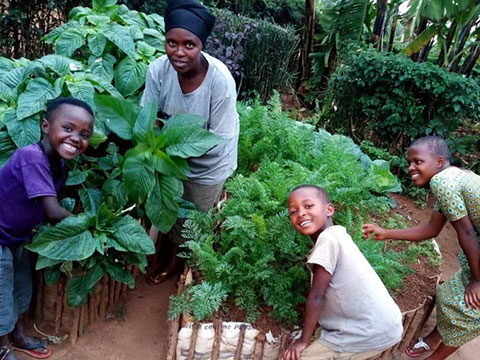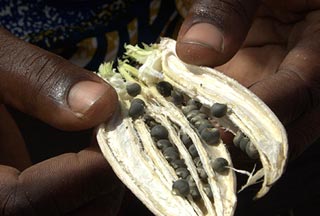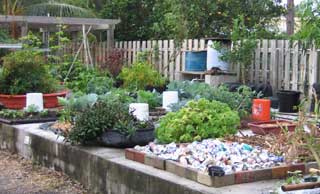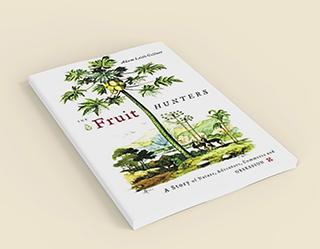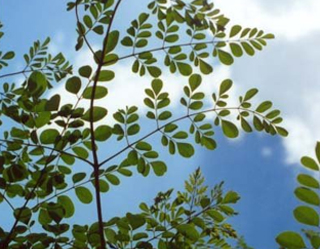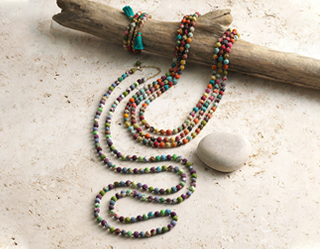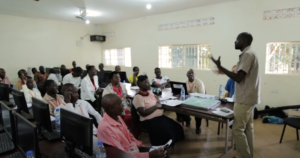Here are five spectacular, beginner-proof plants that will build your confidence and spruce up your yard!
By Sarah Bakeman
For me, pursuing a new hobby like gardening can be difficult. Not only am I haunted by the house plants I’ve failed to keep alive in the past, but also I’m bound to make more mistakes while I learn. That can be discouraging and frustrating. For this reason, I’ve decided to compile a list of five beginner tropical plants with the help of ECHO’s Retail Nursery Coordinator Charles Thibodeau.
These plants are bound to build up confidence as you develop your green thumb!
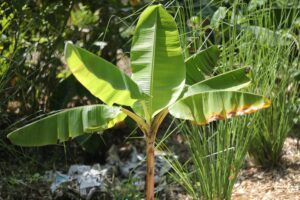
Bananas
Bananas are probably a regular item on your grocery list, which is all the more reason to plant a banana variety. The plant has many pros for those looking to build confidence in gardening. For one, banana grow quickly. If you were to buy a three-gallon pot banana plant in April, by the following spring you’d see it flowering. Just make sure you give it plenty of room to grow when you plant it! The tree is also resilient and vigorous, which allows wiggle room for the inevitable mistakes of the learning process. It can grow in most soil, withstand harsh weather conditions like hurricanes, and it’s resistant to pests. If you grow a banana and really love it, they’re also easy to propagate.
Thibodeau praises the flavor of garden bananas, comparing store-bought vs. homegrown bananas as “night and day.” He even gave me some recommendations for the variety to choose. The Namwa banana is great for beginners and has a rich, sweet vanilla flavor. If you enjoy fried plantains, Orinoco might be a good option for your garden as they are known to cook nicely. And if you’re interested in a sweet, apple-y flavor, the Mysore variety is a good option.
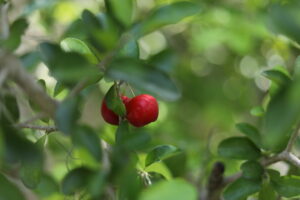
Barbados cherry
If you don’t want something as big as the banana, Barbados cherries might be for you. While this plant is technically a tree, it grows to have a more shrub-like appearance. It’s perfect for those who have less space but still want delicious, rewarding fruit from their yard. Once planted in partial shade, this shrub is easy to take care of. It’ll need regular watering when it’s young, but mature Barbados cherry trees are drought resistant. And as a bonus, this plant is also pest resistant! As for production, you’ll need a bit more patience than you would with the banana tree. It takes about two years for the Barbados cherry tree to produce at full capacity. I’d argue that this is well worth the wait – Barbados cherries have one of the highest concentrations of vitamin C of any fruit in the world. One cherry has double the vitamin C of an orange.
While I was learning more about Barbados cherries, an ECHO expert showed me where the tree was located on the farm. If you’re still not sold, I can now say from personal experience that these cherries taste great. With a beautiful bright red appearance, some say the cherries look like miniature apples growing on the shrub. And when I bit into it, it was an entirely different experience from the Bing cherries most of us are familiar with. There was less flesh, more juice, three seeds, and a bright, tart flavor. I’ll definitely be going back for more!
Cassava
Here at ECHO, we refer to this root crop as cassava, though you may have heard of it as yucca or tapioca. Regardless of title, this plant is a drought-resistant potato substitute that can be grown in marginal soils. It’s a major food staple in the developing world, which makes it a great crop for ECHO’s mission of equipping small-scale farmers around the globe. As long as this root crop isn’t planted in wet soil or the shade, it should be a very manageable crop. After about a year of growing, the cassava is harvested by digging out the root. Thibodeau recommends doing this with your hands, which allows you to find the edges without damaging the roots. With a little bit of imagination, this can feel like an excavation project.
Once you’ve bought a cassava plant, it’s easy to propagate using cuttings. Just by planting those 10-inch limbs into the ground, you can have 10 cassava plants in your second year. One downside to cassava is its relatively short shelf life. Once harvested, you can eat what you want right away. Whatever is left over should be frozen and put in the freezer for later use. ECHOcommunity has lots of great resources to check out surrounding cassava!
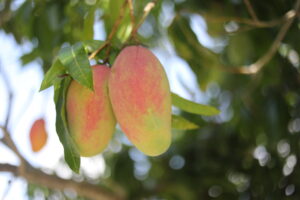
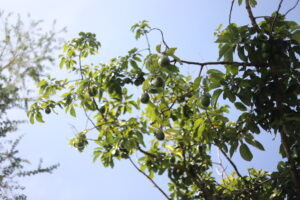
Mango and avocado trees
A two for one! These are two popular and simple trees, so I thought I’d group them together. Though mango and avocado trees take four or five years to produce, they are both easy to grow in loose, rich, well-drained soil. The experts at ECHO recommend buying a grafted tree from a nursery to start out for beginner gardeners. Mango and avocado seedlings can be unpredictable, so a tree from a nursery will give a little more forgiveness and confidence. As long as you and your green thumb follow the basic instructions for tending, this should be a rewarding experience.
After about seven to eight years, the trees will start to really come along. Yes, this is a more long-term investment, but, if taken care of, the trees will produce generously for years. There are plenty of ways to use up mangoes and avocados, and your family will have more than enough to enjoy and share.
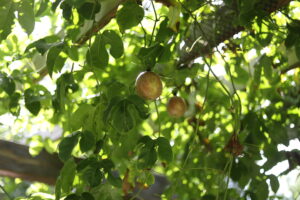
Passion fruit
Beyond trees, roots, and shrubs, vines are a beautiful option for a picturesque beginner garden. According to the experts at ECHO, passion fruit vines are easy to grow. All you need is well-drained soil and a place for the vines to latch to. Thibodeau simply allows the plant to grow on the chain link fence in his yard, though some gardeners have grown them onto yard structures such as pergolas. When given proper sunlight and water, the vines can grow 60 feet in a year and produce hundreds of fruit.
Thibodeau recommends starting with a red or purple variety of passion fruit because it is self-pollinating. Another thing to note about the vine is it loses productivity after about five years, but this can be remedied by planting about 20-30 cuttings from the vine. After sticking them in the soil, five or six are bound to root and grow. And, of course, the passion fruit grown is delicious. It has a sweet and tart flavor and can be eaten plain or dressed up with a little sugar. Beyond that, there are plenty more ways to consume passion fruit. Thibodeau has mixed sugar cane juice with passion fruit concentrate to create a drink comparable to Hawaiian punch. He also eats it on top of ice cream. Regardless of how you choose to eat the fruit, this is a great beginner plant!
–
I hope that something on this list gets you excited about gardening! Between online resources, books, and the gardeners in your life, there’s plenty of planting wisdom to go around. If you’re based in Southwest Florida, ECHO has a farm and nursery in North Fort Myers. Not only can you buy some plants for yourself , but you can also see them grown around the resource center and farm. I wish you and your green thumb good luck!
ECHO provides hope against hunger around the globe through agricultural training and resources. As a Christian technical networking and resourcing organization, ECHO builds a diverse, global network and serves that network by sharing validated contextualized agricultural options with technical excellence. ECHO’s goal is to serve its network members to advance food security and sustainable livelihoods. ECHO’s North American Regional Impact Center is located in Fort Myers, Florida with a global presence through four Regional Impact Centers in the USA, Thailand, Tanzania, and Burkina Faso. For more information about ECHO call 239-543-3246 or visit echonet.org or ECHOcommunity.org.
